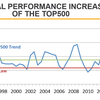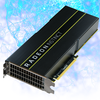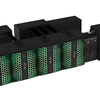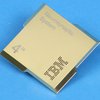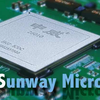For all the supercomputing trends revealed on recent TOP500 lists, the most worrisome is the decline in performance growth that has taken place over the over the last several years worrisome not only because performance is the lifeblood of the HPC industry, but also because there is no definitive cause of the slowdown.
Episode 183: Addison Snell and Michael Feldman dissect Europe's plans for an Exascale system, and contemplate the uses of IBM's low-power TrueNorth chip in its announced U.S. Air Force application.
In March, ministers from seven of the largest European countries signed a declaration that established a timeline for fielding two exascale supercomputers in 2022. The agreement also specified that at least one of these systems will be based on European technology, although, as it turns out, not everyone seems to think this is the best way forward.
AMD is looking to penetrate the deep learning market with a new line of Radeon GPU cards optimized for processing neural networks, along with a suite of open source software meant to offer an alternative to NVIDIAs more proprietary CUDA ecosystem.
Episode 182: Addison Snell and Michael Feldman discuss AMD's launch of EPYC, plus news from IBM and Lenovo.
Even though there wasnt much turnover in the latest TOP500 list, a number of new petascale supercomputers appeared that reflect a number of interesting trends in the way HPC architectures are evolving. For the purposes of this discussion, well focus on three of these new systems: Stampede2, TSUBAME 3.0, and MareNostrum 4.
There are many people whose primary role is running HPC centres, fighting for funding, architecting and delivering HPC services to users. Unfortunately, the development and training opportunities to help future HPC service managers learn essential skills are scarce.
The US Air Force Research Laboratory (AFRL) is working with IBM Research to construct a brain-inspired supercomputing system for deep neural network learning and information discovery.
One of the more unusual pieces of news at this years ISC High Performance conference was the announcement by the National Supercomputing Center in Wuxi that it will be offering a cut-down version of the Sunway TaihuLight supercomputer for more mainstream HPC users.
Episode 181: Addison Snell and Michael Feldman explore the most compelling stories coming out of ISC 17.
